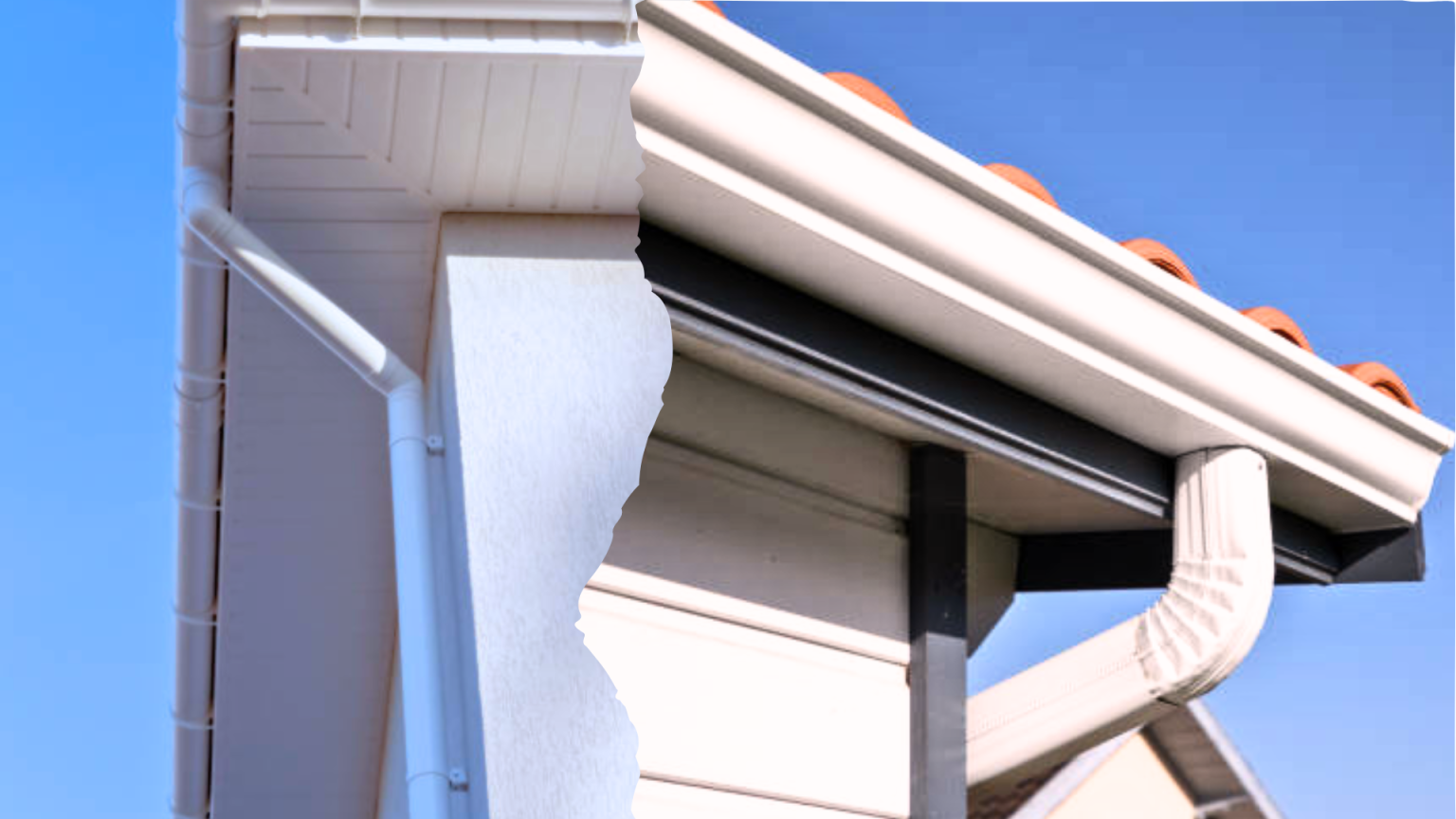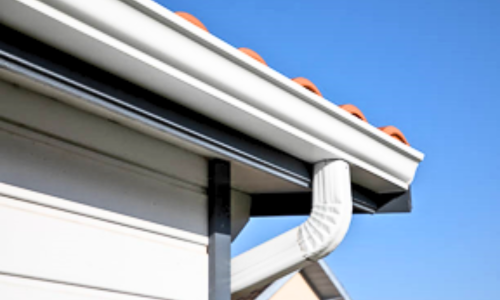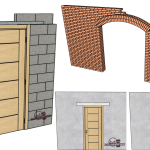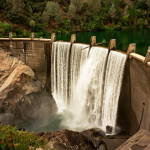
TYPES OF GUTTER | ADVANTAGES & DISADVANTAGES
There are several types of gutter designed to protect your home from rainwater. Gutters help to divert water away from the foundation of your home. They lessen moisture damage that causes cracks and the growth of mold. You can also prevent flooding in your basement.
What is Gutter
A gutter is a narrow channel that is installed along the edge of a roof to collect rainwater and direct it away from the foundation of a building. The primary purpose of gutters is to protect the structure of a building by preventing water from pooling around the foundation, which can cause erosion and water damage.
Gutters are typically made of materials such as aluminum, copper, steel, or vinyl, and come in a variety of shapes and sizes to fit different types of roofs and buildings. They are an important component of a roofing system and require regular maintenance to ensure they are functioning properly.
Types of Gutter
Gutters are essential components of a building’s drainage system. They help to collect and channel rainwater away from the roof and foundation of a structure. There are several types of gutter available, including:

K-style gutters
K-style gutters, also known as ogee gutters, are a popular type of gutter that has a decorative shape that resembles the letter “K” when viewed from the side. They are typically made from materials such as aluminum, copper, or galvanized steel and are available in a variety of sizes and colors to match the exterior of a building.
K-style gutters have a flat bottom and a decorative shape on the front, which makes them more visually appealing than traditional half-round gutters. They are designed to handle a moderate amount of water and are suitable for use on most residential and commercial buildings.
One advantage of K-style gutters is that they have a larger capacity for water than half-round gutters and can handle more heavy rainfall. They are also less likely to clog than half-round gutters due to their flat bottom design. K-style gutters also offer a more streamlined appearance and are less likely to detract from the visual appeal of a building.
However, K-style gutters can be more difficult to install than half-round gutters, as they require special brackets and hangers to be properly secured to the building. They are also more prone to dents and damage than other types of gutters due to their decorative shape.
Overall, K-style gutters offer a good balance between visual appeal and functionality and are a popular choice for most residential and commercial buildings. They are able to handle moderate amounts of rainfall and are less likely to clog than half-round gutters, but they may require more skill to install properly.
Half-round gutters
Half-round gutters are a traditional type of gutter that have a half-circle shape when viewed from the side. They are typically made from materials such as aluminum, copper, or galvanized steel and are available in different sizes and colors to match the exterior of a building.

Half-round gutters are known for their classic look and are often used on historic or older homes. They are also popular in areas with lighter rainfall and are less likely to clog than other types of gutter due to their open design.
One disadvantage of half-round gutters is that they do not handle heavy rainfall as well as other types of gutters because they have a smaller capacity for water. They also require more frequent cleaning than other types of gutters to prevent debris from accumulating and causing blockages.
Installation of half-round gutters can be more difficult and time-consuming than other types of gutters because they require special brackets and hangers to be properly secured to the building. Overall, half-round gutters offer a classic look and are a suitable option for areas with lighter rainfall, but they may require more maintenance than other types of gutters.

Box gutters
Box gutters, also known as square gutters, are a type of gutter that is integrated into the roofline and sits flush with the roof surface. They are typically made from metal or PVC and are designed to handle a large volume of water, making them ideal for commercial or industrial buildings with large roofs.
Box gutters, also known as square gutters, are a type of gutter that is integrated into the roofline and sits flush with the roof surface. They are typically made from metal or PVC and are designed to handle a large volume of water, making them ideal for commercial or industrial buildings with large roofs.
Box gutters are called so because they have a rectangular or square shape, with the sides of the gutter forming the walls of the gutter. The gutter is installed inside a box-like structure that is built into the roofline and slopes toward the downspout to allow for proper drainage. Box gutters are typically custom-made to fit the specific dimensions of the building.
One advantage of box gutters is that they have a larger capacity for water than other types of gutters, making them ideal for large commercial or industrial buildings. They are also less visible than other types of gutter as they are integrated into the roofline, which can be an advantage for buildings with aesthetic considerations.
However, box gutters require more maintenance than other types of gutters due to their design. They are prone to clogging with debris and can be more difficult to clean, as they are integrated into the roofline. Additionally, if not properly installed, box gutters can be prone to leaks, which can cause damage to the building.
Overall, box gutters offer a larger capacity for water and a more integrated look than other types of gutters, but may require more maintenance and can be more difficult to install and clean.
Also read : Parts of Roof | Types of Roof Trusses Roof Design and Styles | Structural Members of a Building
Advantages of gutter
Protecting the building’s foundation: Gutters collect rainwater and direct it away from the building’s foundation, preventing water from pooling and causing damage.
Preventing erosion
By directing water away from the foundation, gutters can also prevent soil erosion around the building.
Protecting landscaping
Gutters can prevent water from damaging landscaping around the building, such as flower beds or shrubs.
Preventing water damage to the building’s exterior
Water can cause damage to a building’s exterior over time, but gutters can help prevent this by directing water away from the building’s walls.
Preventing basement flooding
By directing water away from the foundation, gutters can also help prevent basement flooding.
Reducing the risk of mold and mildew
By preventing water from pooling around the foundation, gutters can help reduce the risk of mold and mildew growth in the building.
Disadvantages of gutter
While gutters offer many benefits, there are also some potential disadvantages to consider. Here are a few possible disadvantages of gutters
Maintenance
Gutters require regular maintenance to ensure they are functioning properly. This includes cleaning out debris and checking for any damage.
Cost
The cost of installing gutters can be relatively high, especially if you opt for high-quality materials or custom options.
Damage
Gutters can be damaged by extreme weather, falling branches, or other hazards. Repair or replacement of damaged gutters can be costly.
Clogging
Even with regular maintenance, gutters can become clogged with leaves, debris, and other materials. This can lead to water backup and potential damage to the building.
Ice dams
In colder climates, ice dams can form on the edge of the roof, preventing water from draining properly and causing damage to the gutters and roof.
Aesthetics
Some people may not like the appearance of gutters and downspouts on their home, which can detract from the building’s aesthetic appeal.
Environmental impact
Gutters can contribute to stormwater runoff, which can potentially cause water pollution and harm to the environment.
Leaks
If not installed properly, gutters can develop leaks, which can lead to water damage and other issues.
Materials of Gutter
Gutters can be made from a variety of materials, each with their own advantages and disadvantages. Here are some common materials used for gutters:
Aluminum
Aluminum is a popular choice for gutters because it is lightweight, rust-resistant, and easy to install. It is also available in a variety of colors to match the exterior of a building.
Copper
Copper gutters are durable and long-lasting, with a distinctive patina that develops over time. They are also rust-resistant and can add an elegant touch to a building’s exterior.
Steel
Steel gutters are strong and durable, making them a good choice for buildings in areas with heavy rainfall or snow. However, they can be prone to rust and require regular maintenance.
Vinyl
Vinyl gutters are lightweight and easy to install, making them a popular choice for DIY projects. They are also affordable and available in a range of colors.
Zinc
Zinc gutters are long-lasting and corrosion-resistant, making them a good choice for buildings in coastal areas. They are also easy to install and available in a range of styles.
Wood
Wood gutters are a traditional option that can add a rustic or historic look to a building. They are typically made from cedar or redwood and require regular maintenance to prevent rot and decay.
The choice of gutter material will depend on various factors, such as the climate in the region, the building’s architecture, and the homeowner’s budget and preferences. It is important to choose a material that is durable, easy to maintain, and can handle the amount of rainfall in the area.







